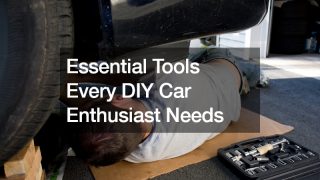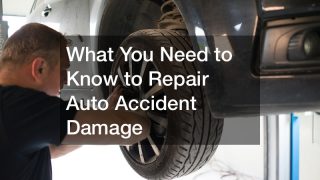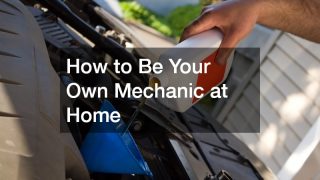
Car ownership comes with the responsibility of maintenance, and for those who enjoy rolling up their sleeves and getting hands-on, having the right tools is paramount. Whether you’re changing oil, replacing brake pads, or tackling more complex repairs, having a well-equipped toolbox can make all the difference between a successful DIY project and a frustrating ordeal. In this guide, we’ll explore the essential tools every DIY car enthusiast needs to have in their arsenal to tackle common auto repairs and maintenance tasks.
1. Socket and Ratchet Set: A socket and ratchet set is a cornerstone of any DIY mechanic’s toolkit. With a variety of socket sizes, both shallow and deep, along with extensions and a swivel joint, this set allows you to tackle a wide range of tasks from loosening bolts to removing spark plugs.
A socket set typically includes sockets ranging from 4mm to 13mm for shallow sockets and 6mm to 13mm for deep sockets. The set also includes extensions and a swivel joint, allowing access to bolts and fasteners in tight spaces. Whether you’re working on your car’s engine, suspension, or interior components, a socket and ratchet set is indispensable.
2. Wrenches: A set of wrenches, preferably in metric sizes, is indispensable for working on cars. Whether it’s tightening nuts and bolts or accessing hard-to-reach areas, having a combination of open-end and box-end wrenches ensures you’re prepared for various repair jobs.
Wrenches come in various styles, including combination wrenches with open and box ends, as well as ratcheting wrenches for added convenience. Metric sizes are commonly used in modern vehicles, ranging from 7mm to 21mm to accommodate different bolt and nut sizes. Having a comprehensive set of wrenches ensures you have the right tool for the job, whether you’re working on your car’s engine, brakes, or suspension.
3. Screwdriver Set: From Phillips to flathead and even Torx screwdrivers, a versatile screwdriver set is essential for tasks ranging from removing interior panels to adjusting components under the hood.
A screwdriver set typically includes a variety of screwdriver types and sizes to accommodate different screw heads commonly found in cars. Phillips and flathead screwdrivers are the most common types used for general automotive repairs, while Torx screwdrivers are often needed for specific applications such as removing interior trim panels or engine components. Having a comprehensive screwdriver set ensures you have the right tool for any task.
4. Pliers and Cutters: A selection of pliers, including needle-nose, cutting, and locking pliers, proves invaluable for gripping, twisting, and cutting wires and hoses during repairs.
Pliers come in various styles, including needle-nose pliers for reaching into tight spaces, cutting pliers for snipping wires and hoses, and locking pliers for holding onto fasteners and other components. Having a comprehensive set of pliers ensures you have the right tool for any task, whether you’re working on your car’s electrical system, brakes, or suspension.
5. Jack and Jack Stands: When it comes to working under your car, safety is paramount. A hydraulic jack paired with sturdy jack stands provides a stable platform for lifting and securing your vehicle, allowing you to perform tasks such as oil changes and brake repairs safely.
A hydraulic jack is used to lift your vehicle off the ground, providing access to the underside for maintenance and repairs. Jack stands are then used to support the vehicle securely while you work underneath it. It’s essential to use both the jack and jack stands correctly to prevent accidents and injuries while working on your car.
6. Brake Tools: For DIY enthusiasts tackling brake jobs, specialized brake tools like caliper piston compressors, brake pad spreaders, and brake line wrenches make the job much easier and ensure proper installation and maintenance of brake components.
Brake tools are designed specifically for working on brake systems, including calipers, pads, and lines. Caliper piston compressors are used to retract brake caliper pistons when replacing brake pads, while brake pad spreaders are used to compress brake pads for installation. Brake line wrenches are specially designed to fit brake line fittings without rounding them off, ensuring a tight seal and preventing leaks.
7. Oil Change Tools: Changing your car’s oil is a routine maintenance task that every DIY car owner should be familiar with. Having a catch bucket, funnel, oil filter wrench, and a torque wrench for properly tightening the drain plug ensures a clean and successful oil change.
Oil change tools are essential for performing regular maintenance on your vehicle’s engine. A catch bucket is used to collect old oil when draining it from the engine, while a funnel helps to pour new oil into the engine without spilling. An oil filter wrench is used to remove and replace the oil filter, while a torque wrench ensures the drain plug is tightened to the manufacturer’s specifications, preventing leaks and damage to the oil pan.
8. Electrical Tools: For diagnosing electrical issues and performing repairs, basic electrical tools such as a multimeter, wire strippers, crimping tool, and test light come in handy. These tools allow you to troubleshoot and fix wiring problems without the need for costly trips to the mechanic.
Electrical tools are essential for diagnosing and repairing electrical issues in your vehicle. A multimeter is used to test voltage, current, and resistance in electrical circuits, while wire strippers are used to remove insulation from wires for splicing and connecting. A crimping tool is used to crimp wire terminals onto wires, while a test light is used to check for the presence of electrical power in circuits.
9. Safety Gear: Last but certainly not least, safety should always be a priority when working on cars. Essential safety gear includes gloves, safety glasses, ear protection, and a respirator for working with chemicals or paints.
Safety gear is essential for protecting yourself from injury while working on your car. Gloves protect your hands from cuts, burns, and chemical exposure, while safety glasses protect your eyes from flying debris and chemicals. Ear protection reduces the risk of hearing damage from loud noises, while a respirator protects your lungs from inhaling harmful fumes and particles.
10. Tool Organization: Keeping your tools organized not only saves time but also prevents frustration during repairs. Invest in a sturdy toolbox or tool chest with compartments for sorting and storing your tools neatly.
Tool organization is essential for efficiency and productivity when working on your car. A sturdy toolbox or tool chest with compartments allows you to keep your tools organized and easily accessible, preventing lost or misplaced tools during repairs. By keeping your tools organized, you can focus on the task at hand and complete repairs more efficiently.
In conclusion, having the right tools is essential for any DIY car enthusiast looking to perform auto repairs and maintenance tasks with confidence. By equipping yourself with a well-rounded toolkit that includes sockets,
.




